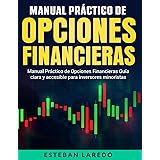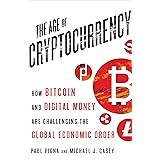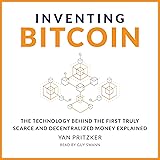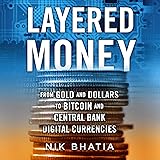The intensifying standoff highlighted in the video above, concerning President Trump’s executive order to dismiss Fed Governor Lisa Cook, signals a significant clash over federal power. This unfolding situation directly spotlights a crucial Fed control battle with broad implications for the nation’s financial future. The legal arguments surrounding Governor Cook’s potential removal challenge established norms regarding the Federal Reserve’s independence and its critical role in shaping U.S. monetary policy.
1. Understanding the Federal Reserve and Its Critical Independence
The Federal Reserve operates as the independent central bank of the United States, tasked with managing the nation’s monetary policy. Its primary objectives include maximizing employment, stabilizing prices, and moderating long-term interest rates. Many consider the Fed a vital economic umpire, calling plays based on economic data rather than political pressures.
Historically, the Fed’s independence from political influence has been a cornerstone of its effectiveness and credibility. This separation ensures decisions about interest rates and money supply serve the nation’s long-term economic health, avoiding short-term political expediency. Interference could undermine global confidence in U.S. economic stability, similar to a referee suddenly favoring one team.
The Federal Reserve Act: A Shield for Governors?
Governor Cook’s legal team contends that President Trump’s action constitutes an unlawful overreach of executive power. The Federal Reserve Act specifically stipulates that a Fed governor can only be removed “for cause” related to actions taken while in office. This provision acts as a vital safeguard, protecting the autonomy of the central bank’s policymakers.
Allegations against Governor Cook predate her tenure at the Federal Reserve, forming the crux of her legal challenge. This distinction creates a significant legal battleground, as the “for cause” clause establishes a very high bar for removal, akin to breaching a meticulously drafted contract only by specific, defined actions. Her team argues that the President’s executive order fails to meet this strict legal criterion.
2. The Stakes: Shifting the Balance on the Board of Governors
The transcript highlights President Trump’s strategic objective: gaining control over the nation’s monetary policy. His potential success in removing Governor Cook and appointing a replacement would secure a critical four-to-three majority on the seven-member Board of Governors. This shift is not merely symbolic; it represents a tangible realignment of power.
Securing a majority on the Board of Governors is akin to gaining a decisive advantage in a high-stakes chess match. The Board, comprising presidential appointees confirmed by the Senate, wields immense influence over decisions that impact every American. A consolidated majority allows a president to more directly steer the direction of interest rates, inflation targets, and other crucial economic levers.
How a Majority Impacts Monetary Policy
A shift in the Board’s majority directly influences the trajectory of monetary policy. This majority determines key decisions regarding the federal funds rate, quantitative easing, and regulatory frameworks impacting banks. Such changes profoundly affect borrowing costs for businesses and consumers, shaping investment and spending patterns across the economy.
For instance, a dovish majority might favor lower interest rates to stimulate economic growth, even at the risk of higher inflation. Conversely, a hawkish majority might prioritize price stability, opting for higher rates to curb inflationary pressures. These philosophical differences, when backed by a voting majority, can profoundly alter economic outcomes, similar to adjusting the main thermostat for an entire national economy.
3. Broader Implications for Financial Markets and Economic Stability
The confrontation over Governor Cook’s firing and the potential for a more politically aligned Federal Reserve introduces significant uncertainty into financial markets. Investors generally prefer predictability and stability from central banks, which underpin their confidence in future economic conditions. Any perceived erosion of the Fed’s independence can trigger adverse reactions across global markets.
An unpredictable shift in monetary policy direction, driven by political rather than economic considerations, could destabilize asset prices and capital flows. This situation mirrors a ship’s rudder suddenly shifting course without warning; such erratic movements can lead to market volatility and undermine long-term economic stability. The independence of the Federal Reserve is thus a bedrock of financial market trust.
The Ripple Effect: From Wall Street to Main Street
Decisions made by the Federal Reserve resonate far beyond the trading floors of Wall Street, extending directly to Main Street businesses and households. Changes in interest rates affect the cost of mortgages, car loans, and credit card debt for millions of Americans. Furthermore, these decisions influence hiring patterns, investment strategies, and overall job market strength.
When the Fed’s independence is called into question, businesses and consumers may face greater uncertainty about future economic conditions. This uncertainty can lead to delayed investments, reduced spending, and a general dampening of economic activity. The entire financial ecosystem, from large corporations to individual savers, relies on the consistent, data-driven stewardship of the Federal Reserve.
4. The Crypto Connection: How Fed Actions Influence Digital Assets
The video’s associated hashtag, #Crypto, points to an important intersection: the influence of traditional monetary policy on the nascent digital asset space. While the transcript does not delve into this directly, actions by the Federal Reserve significantly impact the broader financial environment in which cryptocurrencies operate. Federal Reserve decisions act like a powerful gravitational force affecting various financial planets, including crypto.
For example, a hawkish Fed, raising interest rates to combat inflation, typically makes traditional assets like bonds more attractive, reducing appetite for riskier investments such as cryptocurrencies. Conversely, a dovish Fed, pursuing lower rates and looser monetary policy, often encourages investors to seek higher returns in speculative assets. Therefore, any perceived political interference affecting the Federal Reserve’s monetary stance could create new variables for the crypto market.
Navigating Uncertainty in the Digital Asset Space
The Federal Reserve’s approach to monetary policy often dictates market sentiment and liquidity, both crucial factors for digital assets. When inflation rises and the Fed tightens its policy, cryptocurrencies, often touted as inflation hedges, face scrutiny regarding their actual performance in such environments. Conversely, loose policy creates an abundance of capital, which frequently flows into higher-risk assets.
Political efforts to influence the Federal Reserve’s independence introduce additional layers of unpredictability for crypto investors. The prospect of politically driven monetary policy could alter perceptions of economic stability and the U.S. dollar’s strength. Such developments necessitate a keen awareness of macro-level trends and their potential impact on the evolving crypto market, requiring diligent research and strategic adaptation.







